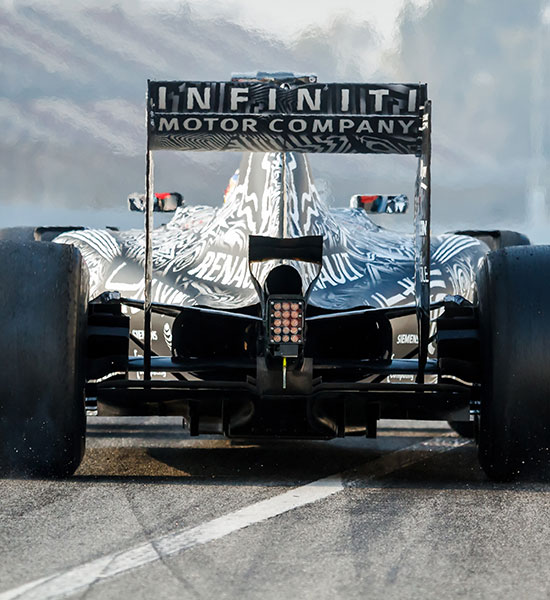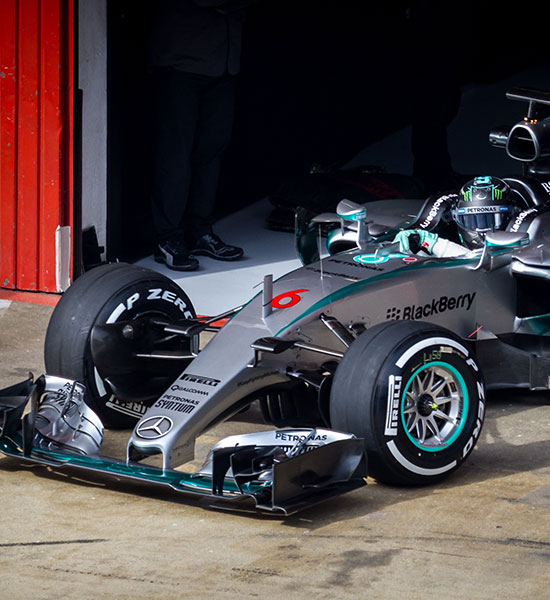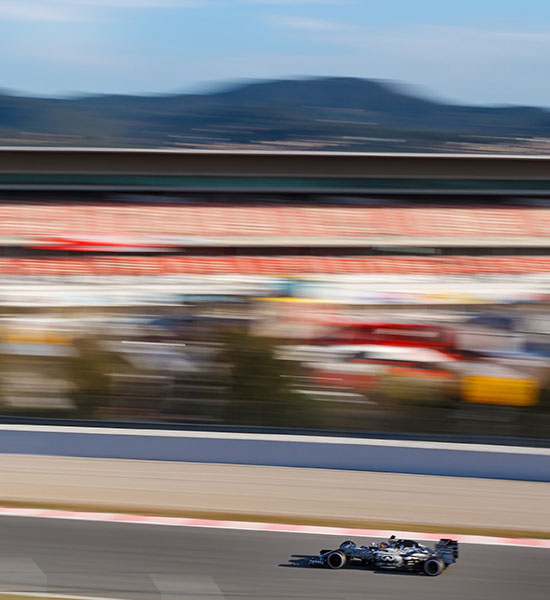Los autos de FORMULA 1® son más parecidos a un avión que a un auto común en la calle, lo que hace la diferencia es la parte aerodinámica. Las láminas aerodinámicas contribuyen el 80% del rendimiento general del auto. Para evitar que éste se eleve con tanta potencia, los alerones montados en la parte delantera y trasera del monoplaza son como las alas de un avión pero colocadas al revés, en lugar de generar impulso hacia arriba, lo generan hacia abajo para amarrar el auto a la pista.
Un auto FORMULA 1® puede pasar de 0 a 200km/h en 2.8 segundos, alcanza 15,000rpm (revoluciones por minuto.), tres veces más que un auto normal, tiene que pesar mínimo 702kg sin combustible; y deben de ser construidos con materiales muy ligeros pero igualmente resistentes.
Además de la parte deportiva, un monoplaza FORMULA 1® es un desafío de ingeniería. Está compuesto en un 75%, de material de fibra de carbono; la capa de pintura que se les coloca es 20 veces más delgada que la de un auto normal y los asientos están hecho a medida de cada piloto.
Una de la inversiones más fuertes en el mundo, es la que utiliza en un FORMULA 1®, debido a la investigación y modelo de negocios. Muchos de los implementos, estrategias de aerodinámica y mecánica sirven para ser implementadas en otras áreas del mundo mecánico.










